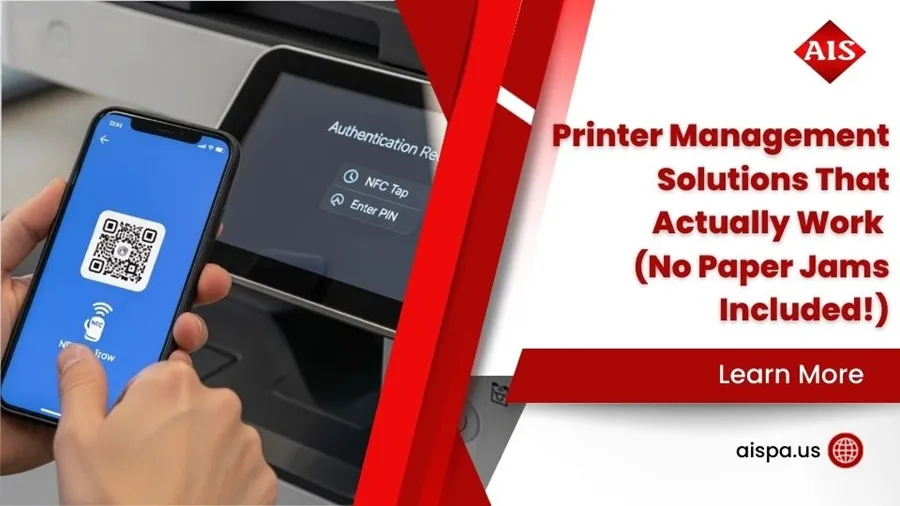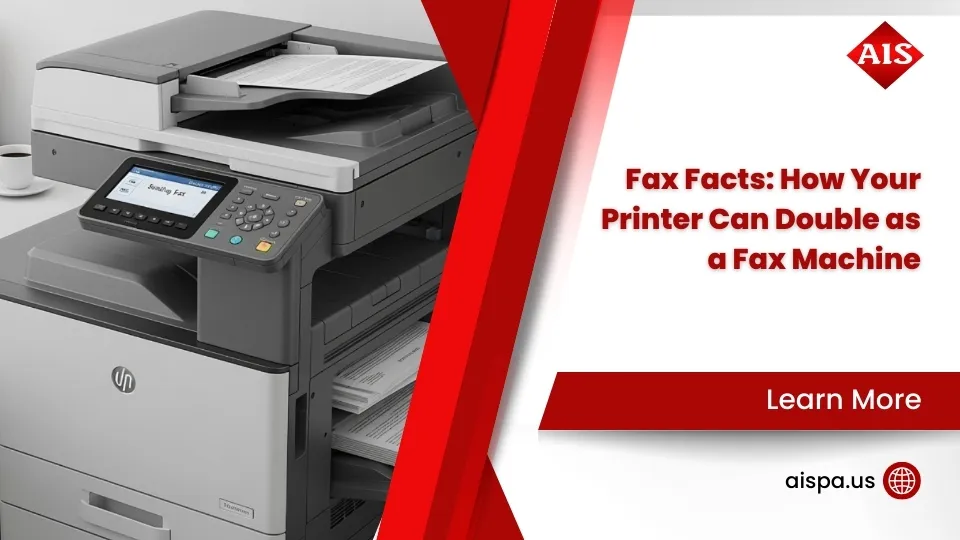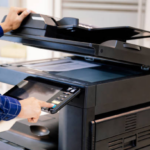Chromebook Double-Sided Printing Made Simple
Learning double sided printing on chromebook can cut your paper costs in half while making your documents look more professional. Here’s the quick answer:
To print double-sided on Chromebook:
- Press Ctrl+P to open the print dialog
- Click “More Settings” to expand options
- Check the “Print on both sides” box
- Select “Flip on long edge” for standard documents
- Click Print
Note: Your printer must support duplex printing for this option to appear.
Double-sided printing (also called duplex printing) automatically prints on both sides of each sheet. This simple change can reduce your paper usage by up to 50% – a significant cost savings for busy offices printing reports, contracts, and other multi-page documents daily.
Many Chromebook users struggle to find the duplex option because it’s tucked away in the “More Settings” menu. Even worse, some printers don’t expose this feature properly through Chrome OS, leaving you to manually flip pages or waste paper on single-sided prints.
The good news? Once you know where to look and how to configure your setup properly, duplex printing becomes as easy as any other print job. Whether you’re printing from Google Docs, PDFs, or web pages, the same basic steps apply across all applications.

What Is Double Sided Printing & Why You’ll Want It
Think of duplex printing as your printer’s way of being extra efficient. Instead of using a fresh sheet for every page, it prints on both sides of the same piece of paper. Pretty clever, right?
Most modern printers handle this magic trick automatically. They print the first side, grab the paper with tiny rollers, flip it around inside the machine, then print the second side. This is called automatic duplex printing, and it happens without you lifting a finger.
Older printers need a bit more teamwork from you. With manual duplex printing, your printer first spits out all the odd-numbered pages (1, 3, 5, and so on). Then you flip the whole stack over, feed it back into the printer, and it prints the even-numbered pages on the blank sides.
Double-sided printing cuts your paper usage in half – literally 50% less paper for the same document. When you’re printing that 20-page report, you end up with 10 sheets instead of 20.
The math is simple but powerful. If your office prints 1,000 pages monthly, switching to duplex means you’ll only use 500 sheets. Your office becomes greener without changing anything else about how you work.
Beyond saving money, duplex printing makes your documents look more professional. Reports feel substantial in your hands. Manuals are easier to flip through. Presentations take up half the space in your filing cabinet.
Learning how to print double sided on chromebook becomes especially valuable when you realize how much this simple setting can transform your daily printing routine.
| Feature | Single-Sided (Simplex) | Double-Sided (Duplex) |
|---|---|---|
| Paper Usage | 100% | 50% |
| Storage Space | High | Low |
| Professional Look | Basic | Improved |
| Environmental Impact | Higher | Lower |
| Cost per Document | Higher | Lower |
Check That Your Gear Is Duplex-Ready
Before you can master how to print double sided on chromebook, you’ll need to make sure your printer and Chromebook are properly set up to work together.
Not every printer can handle duplex printing, and even capable printers sometimes need a little coaxing to reveal their double-sided talents to Chrome OS. Most printers made in the last decade support this feature – they just don’t always show it off properly.
Chrome OS uses something called CUPS (Common Unix Printing System) to chat with your printer. This behind-the-scenes system relies on proper drivers and configuration to open up advanced features like duplex printing. Whether you’re connected through Wi-Fi, USB, or your office network, the basic principles remain the same.
Keeping your printer’s firmware updated can actually solve duplex printing headaches. Manufacturers regularly release updates that improve how their printers communicate with different operating systems, including Chrome OS.

The printer driver acts like a translator between your Chromebook and printer, determining which features appear in your print dialog. If the driver doesn’t “speak duplex,” you won’t see the option, even if your printer supports it perfectly.
Different printer brands handle duplex features in their own unique ways. For a deeper dive into how printer drivers work their magic, check out our guide on What is a Printer Driver?.
Your printer type matters too. Laser printers typically handle duplex printing like champions, while some inkjet models can be a bit finicky. If you’re curious about which type might work better for your needs, our comparison of Inkjet vs Laser Printer has you covered.
Confirm Your Printer Supports Duplex
Start by digging up your printer’s specification sheet or manual. Look for phrases like “automatic duplex,” “two-sided printing,” or “duplex printing.” Most manufacturers list this feature prominently.
Can’t find that manual? Search for your printer model online and visit the manufacturer’s website. They typically spell out all supported features, including duplex capabilities, right in the product specifications.
Pay attention to terms like “flip on long edge” and “flip on short edge” – these are telltale signs your printer can handle duplex printing. Long-edge binding (think book-style) flips pages along the long edge, perfect for portrait documents. Short-edge binding flips along the short edge, which works better for landscape documents.
Add & Configure the Printer on Chromebook
Ready to introduce your Chromebook to your printer? Head to Settings > Advanced > Printing to get started. Chrome OS is pretty smart about detecting network printers automatically, but sometimes you’ll need to play matchmaker using the “Add printer” wizard.
For network printers, you’ll need your printer’s IP address. You can usually find this in your printer’s network settings menu or by printing a network configuration page.
The CUPS system uses this IP address information to establish a proper conversation with your printer. Most printer manufacturers follow a similar setup dance: detect the printer, download the necessary drivers, and configure available features.
For step-by-step guidance through the entire Chromebook printing setup process, our comprehensive guide on How to Print on Chromebook walks you through everything you need to know.
Step-by-Step: How to Print Double Sided on Chromebook

Here’s where the magic happens – actually getting your Chromebook to print double sided. The good news is that once you know the secret location of Chrome’s duplex settings, the process becomes second nature.
Chrome OS keeps things simple by using the same print dialog everywhere. Whether you’re printing a Google Doc, a PDF from your Downloads folder, or even a recipe from a website, the steps stay exactly the same. This consistency makes duplex printing a breeze once you’ve mastered it.
The binding options might seem confusing at first, but they’re actually quite logical. “Flip on long edge” creates the familiar book-reading experience where you turn pages from right to left. “Flip on short edge” works better for landscape documents or when you want pages to flip like a calendar or notepad.
Don’t worry about page ranges either – duplex printing handles them intelligently. Print pages 1-6 double-sided, and you’ll get three sheets with pages paired naturally: 1 and 2 on the first sheet, 3 and 4 on the second, and 5 and 6 on the third.
How to Print Double Sided on Chromebook: Locate the Option in Print Dialog
Open whatever document you want to print and hit Ctrl+P. This trusty keyboard shortcut opens the print dialog no matter what app you’re using – it’s your gateway to duplex printing success.
The print dialog opens with basic options visible: which printer to use, how many copies you want, and which pages to print. But here’s the thing – Chrome hides the duplex option to keep the interface clean. You need to click “More Settings” at the bottom to reveal the hidden treasure.
Once you expand those settings, scan down until you spot the “Print on both sides” checkbox. Check that box, and boom – a dropdown menu appears with your binding options. For most documents, “Flip on long edge” is your best bet since it mimics how books are bound.
The print preview is your friend here. It updates immediately to show how your pages will look when printed double-sided. If something looks wonky – maybe the text orientation seems off – you can switch between the binding options until it looks right.
How to Print Double Sided on Chromebook: What to Do If the Checkbox Is Missing
Sometimes you’ll open that print dialog expecting to see the duplex option, only to find… nothing. Don’t panic – this usually has a simple fix, though it might take a bit of detective work.
First, double-check that your printer actually supports duplex printing. Chrome OS is smart enough to only show options your printer can handle. If your printer can’t flip pages automatically, Chrome won’t tease you with an option that won’t work.
Updating Chrome OS often works wonders. Google constantly improves printer compatibility behind the scenes. Head to Settings > About Chrome OS > Check for updates and let your Chromebook grab the latest improvements. You might be surprised what new features appear after an update.
Try removing and re-adding your printer in Chrome OS settings. Sometimes the initial setup doesn’t catch all your printer’s capabilities. A fresh connection forces Chrome OS to have another conversation with your printer and find what it can really do.
Here’s a power user trick: press Ctrl+Shift+P instead of the regular Ctrl+P. This opens the system print dialog instead of Chrome’s streamlined version. Sometimes this deeper interface exposes duplex options that don’t appear in the standard dialog.
If you’ve been experimenting with chrome://flags, those experimental settings might be interfering with normal printing behavior. Try resetting any printing-related flags to their default values – sometimes these experimental features can hide standard options.
Driver limitations are the most frustrating culprit. Some printer manufacturers don’t fully support duplex printing in their Chrome OS drivers, even when the physical printer handles it perfectly. If you’ve tried everything else, you might need to contact the manufacturer or use manual duplex printing as a workaround.
For alternative printing approaches that might offer different duplex options, check out our guide on How to Print from My Phone.
Manual Workaround When Your Printer Isn’t Duplex

Don’t worry if your printer doesn’t have automatic duplex capability – you can still achieve professional double-sided documents with a little extra effort. Manual duplex printing delivers the same paper-saving results.
The secret lies in printing your document in two separate passes. First, you’ll print all the odd-numbered pages (1, 3, 5, 7, etc.), then flip the paper stack and print the even-numbered pages (2, 4, 6, 8, etc.) on the blank sides.
Paper orientation is absolutely critical for success. Every printer handles paper differently – some spit out pages face-down with the first page at the bottom of the stack, while others deliver pages face-up with page one on top.
Here’s how to master manual duplex printing on your Chromebook:
Start with odd pages first by opening your print dialog (Ctrl+P) and setting the page range to odd numbers only. Many Chrome print dialogs have an “Odd pages only” option, but you can also manually type “1,3,5,7,9” for smaller documents.
Let those pages rest for about 30 seconds after printing. This cooling period prevents smudging, especially important with inkjet printers where the ink needs time to dry properly.
Study your page stack carefully before moving forward. Notice whether pages came out face-up or face-down, and which page is on top. This observation determines exactly how you’ll flip the stack for the second pass.
Flip the entire stack while maintaining the same page order. If pages came out face-down, flip the whole stack over. If they came out face-up, you might need to reverse the order depending on your printer’s paper path.
Reinsert the paper into your printer’s input tray, making sure it’s positioned correctly for the second pass. The blank sides should be ready to receive the even-numbered pages.
Print the even pages by setting your page range to even numbers only or typing “2,4,6,8,10” manually.
Check your alignment by examining the first few sheets. If pages don’t line up properly, you’ll know how to adjust for next time.
The smartest approach is testing with a small document first. Try printing a simple 4-page document to understand how your specific printer behaves.
Paper quality becomes more important with manual duplex since sheets go through the printer twice. Heavier paper stocks handle the double-pass process much better. For detailed guidance on selecting the right paper, check out our guide on Choose Right Printer Paper Types.
Troubleshooting & Pro Tips for Reliable Duplex Jobs
Even when you’ve mastered how to print double sided on chromebook, occasional hiccups can throw a wrench in your workflow. Most duplex printing issues have simple solutions once you know what to look for.
Chrome OS updates sometimes shake things up with printer communication, temporarily breaking duplex functionality. If your duplex printing suddenly stops working after an update, the quickest fix is usually removing and re-adding your printer in Chrome OS settings.
Different printer brands have their own quirky ways of labeling duplex features. HP printers might display “Two-sided printing” while Canon devices prefer “Duplex printing.” Brother printers sometimes call it “2-in-1 printing.” The functionality is identical regardless of the name.
Setting duplex as your default can be a real time-saver if you frequently print double-sided documents. Many printers allow you to configure these default settings through their web interface. Simply type your printer’s IP address into a web browser and explore the settings menu.
Cache clearing often resolves mysterious disappearing print options. If the duplex checkbox vanishes without warning, clear Chrome’s browsing data and restart your browser.
Restarting your printer should be your first troubleshooting step before diving into complex software solutions. Many duplex issues stem from the printer’s internal memory getting cluttered.
Paper consistency matters more than you might expect. Using consistent paper types prevents the mechanical headaches that cause duplex jobs to jam halfway through.
Regular firmware updates from your printer manufacturer often include improved duplex compatibility and bug fixes. Most modern printers can update themselves over Wi-Fi.
The environmental benefits extend far beyond simple paper savings. Duplex printing reduces transportation costs for paper delivery, cuts storage space requirements, and minimizes waste disposal needs. A typical office printing 10,000 pages monthly saves approximately 2,500 sheets through duplex printing.
Cost calculations reveal impressive long-term savings. If your office spends $50 monthly on paper, duplex printing could slice that to $25. Over a year, that’s $300 in savings, plus reduced storage and disposal costs.

At Associated Imaging Solutions, we’ve helped countless Pennsylvania businesses optimize their printing workflows. From our locations in Philadelphia, Pittsburgh, Harrisburg, and throughout the state, we’ve witnessed how proper duplex setup transforms office efficiency. The initial configuration effort pays dividends in reduced costs and improved document presentation.
Testing with simple documents before tackling complex layouts saves frustration and wasted paper. Try a basic 4-page document first to understand how your specific setup handles duplex printing.
Frequently Asked Questions about Chromebook Duplex Printing
Why doesn’t the double-sided option appear on my Chromebook?
This frustrating issue usually boils down to one simple fact: your printer doesn’t support duplex printing, or Chrome OS can’t figure out that it does. Before diving into complex troubleshooting, double-check your printer’s specs. Look for “automatic duplex” or “two-sided printing” in the manual or on the manufacturer’s website.
If your printer definitely supports duplex but the option still won’t show up, don’t panic. Update Chrome OS first – Google constantly improves printer compatibility, and your missing duplex option might appear with the latest version. Head to Settings > About Chrome OS > Check for updates.
Still no luck? Try removing and re-adding your printer in Chrome OS settings. Sometimes the initial setup misses certain capabilities, and starting fresh forces the system to properly detect what your printer can do.
Firmware updates on your printer itself can also solve compatibility issues. Many manufacturers release updates that improve how printers communicate with Chrome OS, especially for duplex features.
Here’s a neat trick: try pressing Ctrl+Shift+P instead of the regular Ctrl+P shortcut. This opens the system print dialog instead of Chrome’s interface, sometimes revealing duplex options that were hiding.
Some printer drivers simply don’t play nice with Chrome OS, even when the hardware fully supports duplex printing. This happens more often with older models or budget printers where manufacturers didn’t invest heavily in Chrome OS compatibility.
Can I set double-sided as the default every time I print?
Chrome OS doesn’t give you a straightforward way to make duplex your permanent default, but you’ve got some clever workarounds that work just as well.
Your best bet is accessing your printer’s web interface. Type your printer’s IP address into any web browser and look for default printing preferences. Changes you make here affect every device that prints to that printer – pretty handy for office setups where everyone wants duplex by default.
Many printers also let you configure defaults through their control panel. Dig into your printer’s menu system and look for “Default Settings” or “Print Preferences.” Once you set duplex as the default here, it becomes the standard for all print jobs.
Google Docs has a neat memory feature – it remembers your last print settings within each browser session. Print double-sided once, and Google Docs will automatically select duplex for your next print job. It’s not permanent, but it saves clicks during active work sessions.
Some newer printers even learn your preferences over time, gradually making duplex the suggested option when they notice you consistently choose it.
Will these steps work inside Google Docs and other web apps?
Absolutely! The beauty of Chrome OS is its unified printing system. Whether you’re printing from Google Docs, Gmail, PDF viewers, or any website, the how to print double sided on chromebook process stays exactly the same.
Google Docs works particularly well with duplex printing. The application preserves complex formatting during double-sided printing and shows accurate previews, so you know exactly how your document will look. Tables, images, and mixed layouts all print reliably in duplex mode.
PDF printing is equally smooth. Chrome’s built-in PDF viewer respects whatever duplex settings you choose, making it effortless to print downloaded reports, contracts, or presentations double-sided.
Some websites have their own print buttons or interfaces, but these almost always call up Chrome’s standard print dialog behind the scenes. Your duplex options remain available no matter how you trigger the print function.
The consistency is refreshing – once you learn how to print double sided on chromebook in one application, you’ve mastered it everywhere. No need to hunt for different settings in different apps or wonder if duplex will work with a particular document type.
Conclusion
Learning how to print double sided on chromebook is one of those small skills that makes a surprisingly big difference in your daily work life. Once you’ve got the hang of finding that “Print on both sides” checkbox in the “More Settings” menu, you’ll wonder why you ever printed single-sided documents.
The environmental impact alone makes it worthwhile – cutting your paper usage in half isn’t just good for your budget, it’s a simple way to reduce your office’s footprint. When you multiply those savings across months and years, the numbers really add up.
The core process stays the same no matter what you’re printing: hit Ctrl+P, expand “More Settings,” check the duplex box, and choose your binding style. Whether it’s a Google Docs report, a PDF contract, or a web page, these steps work consistently across all applications.
Don’t get discouraged if your printer doesn’t automatically support duplex printing. The manual method we covered works with virtually any printer – it just takes a bit more patience and attention to paper orientation. Many offices successfully use this approach for years without missing automatic duplex functionality.
Troubleshooting becomes easier once you understand the common culprits. Missing duplex options usually trace back to printer compatibility, outdated Chrome OS versions, or driver issues. The solutions we’ve outlined – updating, re-adding printers, trying different print dialogs – resolve most problems.
Our team at Associated Imaging Solutions sees businesses across Pennsylvania transform their document workflows with proper duplex setup. From busy Philadelphia law offices to growing Pittsburgh startups, the combination of cost savings and professional document presentation makes duplex printing a no-brainer.
The beauty of mastering this skill is that it becomes automatic. After a few successful duplex print jobs, checking that box becomes second nature. Your documents look more professional, your paper costs drop, and you’re contributing to a more sustainable office environment.
Start small with your next multi-page document. Practice the process, get comfortable with the settings, and soon you’ll be handling complex duplex jobs with confidence. Your future self – and your office budget – will thank you for taking the time to learn how to print double sided on chromebook properly.











